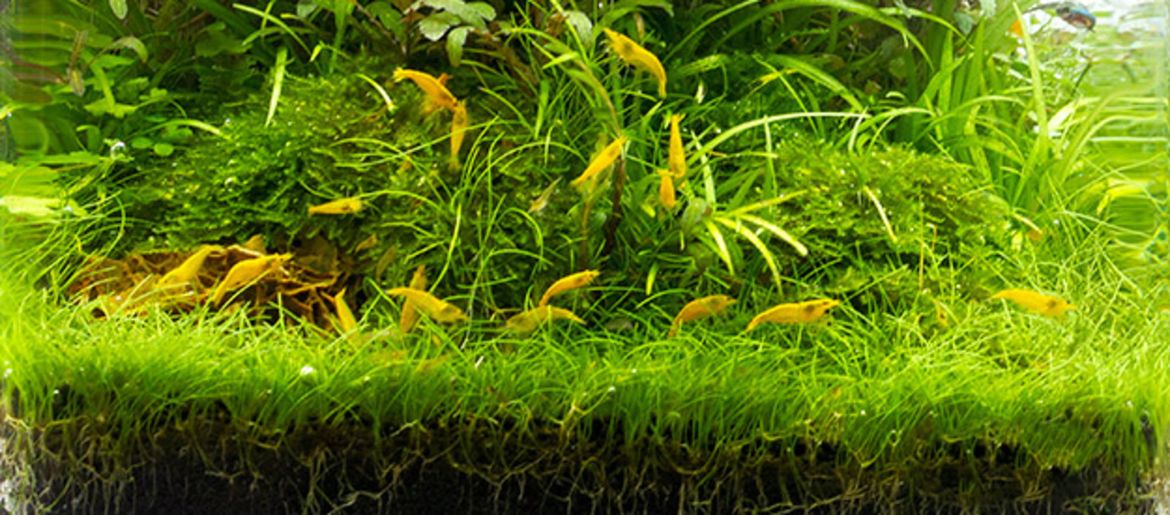Tools in the aquarium
Plant tweezers and tools for aquariums!
Aquascaping is still very trendy and you may wonder, if you're new to it, what tools will I need? Or even if any are required? Aren't the good old hands doing it?
Why special tools for the aquarium at all?
At the latest, however, when you try to plant your aquarium reasonably nicely as a traditional aquarist, you want something that is less clumsy than the human hand. Especially in a nano basin, fine foreground plants are very difficult if you only have your fingers available as tools. With normal tweezers or household scissors, of course, it works somehow, but rather badly than right, because most of the tools commonly used in the household are simply too short - this makes the work really tedious. Luckily, the manufacturers already thought something about it when they developed aquascaping tools! These tools are much more suitable for working in the aquarium because they have a good length. So you do not have to dive head over heels into the aquarium, but can comfortably come from above with the tool and do not have to get your arms wet.
Which tool for which purpose?
Planting Tweezers:
Plant tweezers are particularly effective in planting your aquarium plants in the ground. The planting tweezers XL by Dennerle is a proud 45 cm long and thanks to its thin tips it can go anywhere, even in rough places between stones or roots. The gripping surfaces are grooved and hold the plants comfortably without squeezing them. You can also use the tweezers to sink fertiliser balls or fertiliser capsules ( Dennerle NutriBalls or PowerTabs ) into the substrate close to the roots of your aquarium plants if the greens like to have an extra dose of nutrients. You can also use this pair of tweezers to fish out anything that doesn't belong in your aquarium - dead plants or other remains. And you can even use it to poke the ground quickly if you suspect something is bothering you. The Nano Aquascaping Set by Dennerle also includes plant tweezers that work just like the big sister in XL, but which is much more suitable for a smaller nano aquarium because it is significantly shorter with a total length of 27 cm. You can get into every corner in small cubes and manoeuvre more skillfully.
Planting Tips
A little tip on the side: if you do not cut the leaves off your stem plants on the piece that comes into the ground, but instead leave the petiole and a small part of the leaf, you have created a kind of small barbs that your stem plant keeps in the ground and prevents them from floating. Another tip on the side: The use of foreground plants can even lead you to despair with tweezers, the roots are often too fine. and the buoyancy is too high. You can easily remedy this with a little trick. With conventionally produced aquatic plants with rock wool at the roots, you do not remove all of the stone wool, but leave the top centimetre close to the plant. When inserted, it acts as an anchor and increases the adherence of the plant to the substrate. Of course, this does not work with plants grown in vitro ... there is no stone wool here. After planting, carefully sprinkle them with a little aquarium gravel or soil so that they are slightly covered. The extra weight keeps them down until they are rooted. You can also cover the coarse ground with a layer of fine ground, in which the fine roots of the foreground plants gain a foothold much faster and find better grip.
Shears
The use of pruning shears is somehow self-explanatory. It is suitable for shortening moss cushions that are too large, stem plants that have become too long, you can use them to remove old leaves that have become unsightly, or to thin out and shorten rosette plants that are too large. It also does a good job preparing the plants for use. You can use it to shorten the roots to 3-4 cm in length so that they branch out immediately after planting and are not squeezed when planted. The Nano pruning shears in the Nano Aquascaping Set by Dennerle are 25 cm long and also super manoeuvrable in small aquariums.
Planting Tips
Another small tip on the side: If you plant needle ledges, you should simply cut off the fine leaves about 1-2 cm above the roots. The plant drives new leaves from below and becomes very beautiful. The old leaves would reject them anyway, and the scourge in the aquarium can be infinitely annoying because it really sticks in every corner.
Another small tip on the side: have you bought stem plants in a pot that sit in stone wool, and you want to save yourself the pinching of the rock wool (which every aquarist will understand all too well, there is actually nothing more annoying when preparing plants) - Simply remove the stems from above the pot and shorten the bottom 3-5 leaves as described in the first small tip above. Stem plants are notorious for rooting out incredibly quickly, so you can just use the bare stems and the plant will do the rest.
Gravel spatula
With the gravel spatula in the Nano Aquascaping Set, you can make the substrate pretty smooth. Nothing messes up the sight of an otherwise lovingly and carefully decorated aquascape like an unevenly distributed, uneven ground full of levers and holes. It doesn't have to be like this... the gravel spatula from the Nano Aquascaping Set by Dennerle has a total length of 32 cm and two spatula ends of different widths, one 15 and one 68 mm wide. With this, you can smooth the floor flat between roots or stones.
Cleanator
Not a classic aquascaping tool, but a useful and versatile tool in the aquarium is the Dennerle Cleanator. With the double-sided sponge, you clean your aquarium glass flawlessly, and the silvery, rough stainless steel side even grabs stains and deposits from hard and unruly algae such as spot algae or crust algae. Guaranteed scratch-free, stainless steel is softer than glass.
Nano alginator
The Nano Alginator is also a useful little cleaning tool for the aquarium, especially for Nano Cubes and Scaper Aquariums with their curved corners in the front. The cleaning surface is somewhat rounded, and so it comes into these corners, something that conventional magnetic disc cleaners cannot do. The extra flat inner part easily slips behind the device and pushes through all kinds of decoration without getting caught. The neodymium magnet is really strong with a holding force of 2.5 kg and holds reliably.
Especially before taking photos in the aquarium, the use of the Dennerle Cleanator and / or the Nano Alginator is really recommended, otherwise, you will stamp out all possible particles on the aquarium glass from your photos for hours afterwards. You probably have something better to do ... for example to enjoy your aquarium free of stains.
We hope you enjoy your aquarium!
Chris Luckhaup
Latest reviews
-
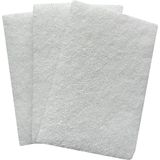 4.5 (2)
4.5 (2)Jöst Ocean-PAD 100x150mm, 3 Pcs
- Cleaning pad for the aquarium
- High-quality pad
- Scratch-free and gentle on glass
£5.00 (£1.67 / Pc)Delivery by January 09
-
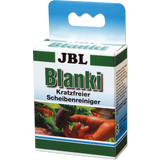 4.3 (7)
4.3 (7)JBL Blanki
- Effortless removal of stubborn deposits on aquarium glass
- With a steel wool pad and a practical handle
- Suitable for freshwater and saltwater aquariums
£9.00Delivery by January 09
-
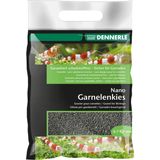 5.0 (10)
5.0 (10)Dennerle Nano Sulawesi Black Shrimp Gravel, 2 kg
- Perfect organic function
- Rounded grains
- Protection for bottom-dwelling fish
£10.00 (£5.00 / kg)Delivery by January 09
-
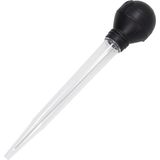 4.9 (10)
4.9 (10)ARKA Multifunction Pipette With Brush - 50ml - 30cm
- With cleaning brush
- Filling volume: 50 ml
- Length: 30 cm
£10.00Delivery by January 09
Magazine Articles:
-
Great Britain: Free standard delivery from £69.90
-
Free
returns -
We operate in a
climate-conscious manner. Secure payments
with SSL encryption technology
